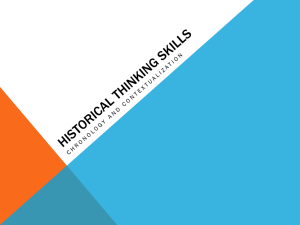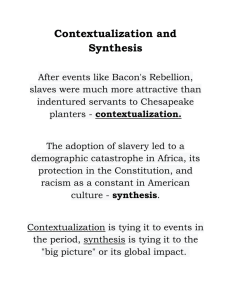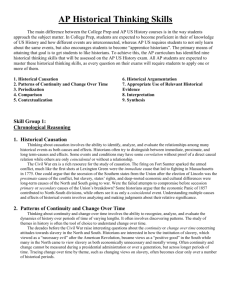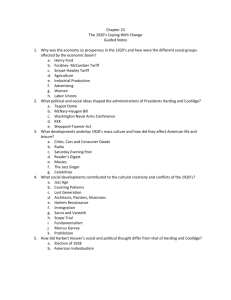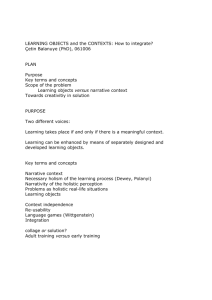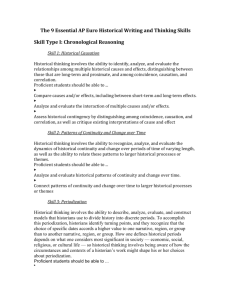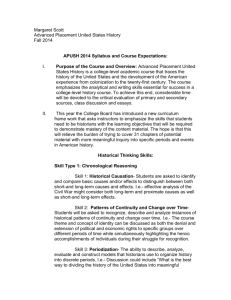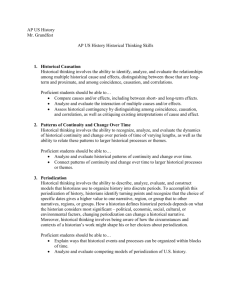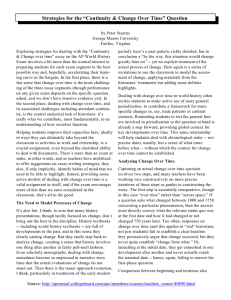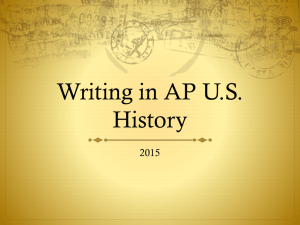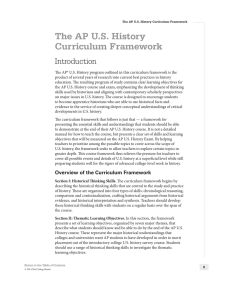The Four Historical Thinking Skills
advertisement
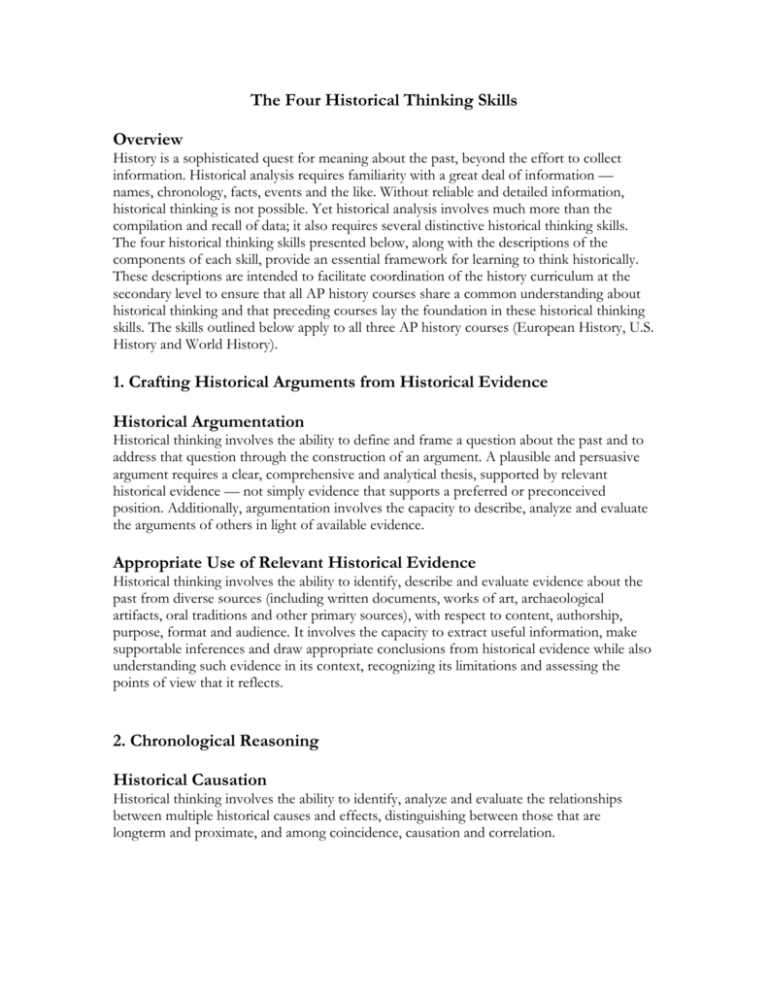
The Four Historical Thinking Skills Overview History is a sophisticated quest for meaning about the past, beyond the effort to collect information. Historical analysis requires familiarity with a great deal of information — names, chronology, facts, events and the like. Without reliable and detailed information, historical thinking is not possible. Yet historical analysis involves much more than the compilation and recall of data; it also requires several distinctive historical thinking skills. The four historical thinking skills presented below, along with the descriptions of the components of each skill, provide an essential framework for learning to think historically. These descriptions are intended to facilitate coordination of the history curriculum at the secondary level to ensure that all AP history courses share a common understanding about historical thinking and that preceding courses lay the foundation in these historical thinking skills. The skills outlined below apply to all three AP history courses (European History, U.S. History and World History). 1. Crafting Historical Arguments from Historical Evidence Historical Argumentation Historical thinking involves the ability to define and frame a question about the past and to address that question through the construction of an argument. A plausible and persuasive argument requires a clear, comprehensive and analytical thesis, supported by relevant historical evidence — not simply evidence that supports a preferred or preconceived position. Additionally, argumentation involves the capacity to describe, analyze and evaluate the arguments of others in light of available evidence. Appropriate Use of Relevant Historical Evidence Historical thinking involves the ability to identify, describe and evaluate evidence about the past from diverse sources (including written documents, works of art, archaeological artifacts, oral traditions and other primary sources), with respect to content, authorship, purpose, format and audience. It involves the capacity to extract useful information, make supportable inferences and draw appropriate conclusions from historical evidence while also understanding such evidence in its context, recognizing its limitations and assessing the points of view that it reflects. 2. Chronological Reasoning Historical Causation Historical thinking involves the ability to identify, analyze and evaluate the relationships between multiple historical causes and effects, distinguishing between those that are longterm and proximate, and among coincidence, causation and correlation. Patterns of Continuity and Change over Time Historical thinking involves the ability to recognize, analyze and evaluate the dynamics of historical continuity and change over periods of time of varying length, as well as relating these patterns to larger historical processes or themes. Periodization Historical thinking involves the ability to describe, analyze, evaluate and construct models of historical periodization that historians use to categorize events into discrete blocks and to identify turning points, recognizing that the choice of specific dates privileges one narrative, region or group over another narrative, region or group; therefore, changing the periodization can change a historical narrative. Moreover, the particular circumstances and contexts in which individual historians work and write shape their interpretation and modeling of past events. 3. Comparison and Contextualization Comparison Historical thinking involves the ability to describe, compare and evaluate multiple historical developments within one society, one or more developments across or between different societies, and in various chronological and geographical contexts. It also involves the ability to identify, compare and evaluate multiple perspectives on a given historical experience. Contextualization Historical thinking involves the ability to connect historical developments to specific circumstances of time and place, and to broader regional, national or global processes. 4. Historical Interpretation and Synthesis Interpretation Historical thinking involves the ability to describe, analyze, evaluate and create diverse interpretations of the past — as revealed through primary and secondary historical sources — through analysis of evidence, reasoning, contexts, points of view and frames of reference. Synthesis Historical thinking involves the ability to arrive at meaningful and persuasive understandings of the past by applying all of the other historical thinking skills, by drawing appropriately on ideas from different fields of inquiry or disciplines and by creatively fusing disparate, relevant (and perhaps contradictory) evidence from primary sources and secondary works. Additionally, synthesis may involve applying insights about the past to other historical contexts or circumstances, including the present.
